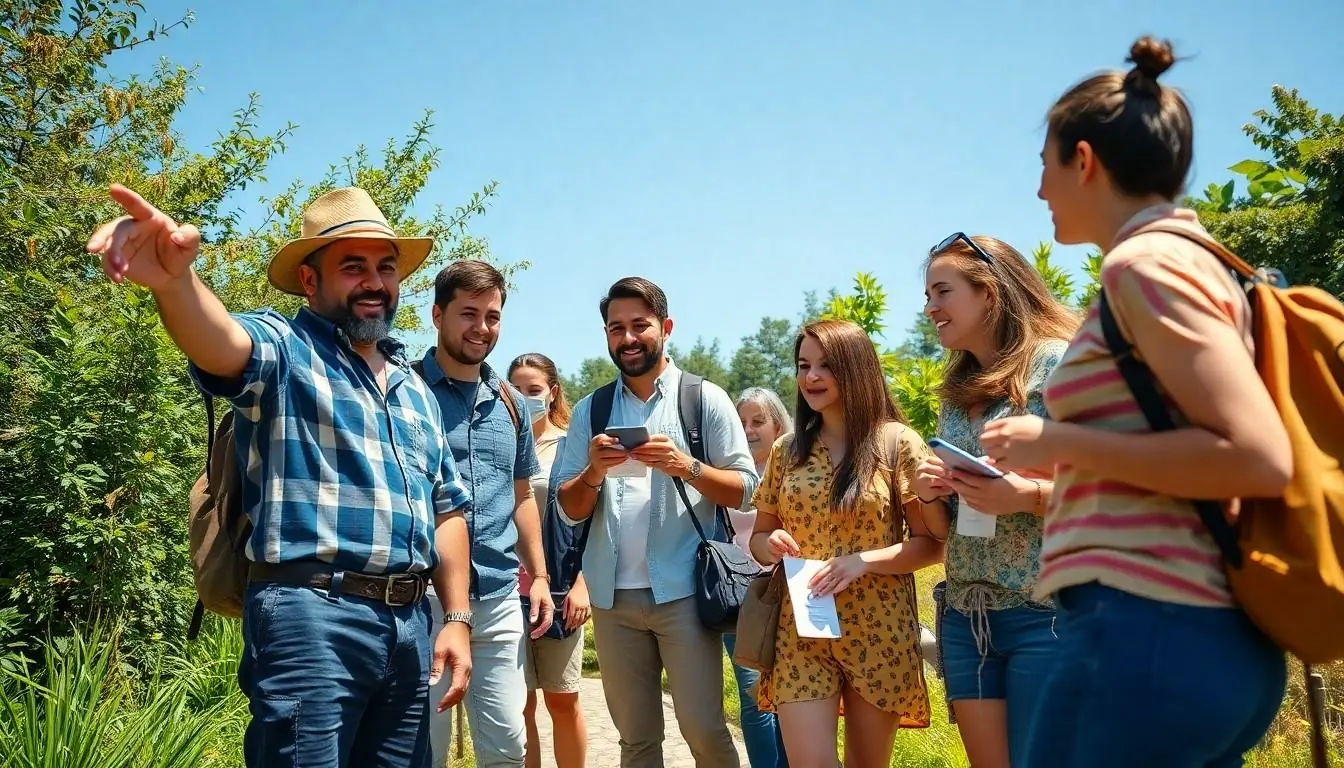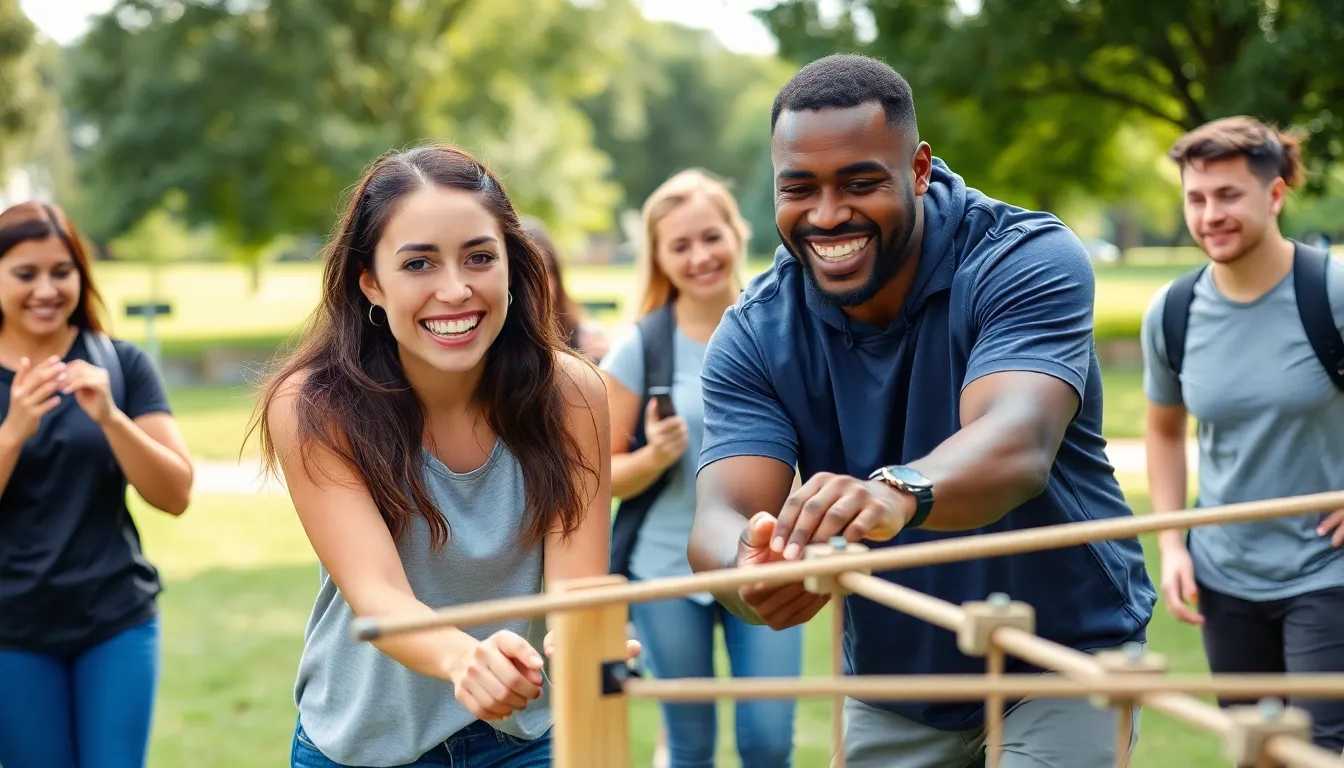In a world where collaboration is key, team building experiences can transform a group of individuals into a powerhouse of creativity and productivity. Picture this: a room full of colleagues, armed with nothing but their wits and a questionable amount of trust falls. It sounds like a recipe for disaster, but it’s actually the secret sauce for success.
Table of Contents
ToggleOverview of Team Building Experience
Team building experiences play a crucial role in enhancing workplace dynamics. These activities encourage colleagues to collaborate, resulting in improved communication skills and stronger relationships. Activities designed for team building range widely, including problem-solving tasks, outdoor adventures, and creative workshops.
Engagement in these exercises produces measurable benefits. Companies often report increased productivity levels and higher employee morale after participating in team events. Moreover, team building helps to break down barriers and foster an inclusive environment, addressing the diverse personalities within a group.
Trust is vital in a team, and team building experiences are instrumental in establishing this foundation. They provide opportunities for team members to learn about each other’s strengths and weaknesses, reinforcing mutual respect. Challenge-based scenarios can highlight individual capabilities, encouraging team members to rely on each other’s skills.
Flexibility in planning these experiences matters. Organizations that tailor activities to specific team needs see greater participation and enthusiasm. Success stories arise when teams engage in meaningful activities that resonate with their collective goals.
Investing in team building shows long-term gains. The effects become evident in improved collaboration on projects and creative problem-solving approaches. Dedicated team time cultivates a sense of belonging, demonstrating its importance in overall employee satisfaction.
Understanding the benefits of team building experiences enables organizations to create more cohesive teams. Leaders who recognize its significance foster environments where team members thrive collectively.
Types of Team Building Activities

Team building activities come in various forms, each designed to foster collaboration and strengthen relationships within teams. These activities can be categorized as outdoor or indoor experiences.
Outdoor Activities
Outdoor activities facilitate engagement through physical challenges and teamwork. Group hikes encourage communication and problem-solving. Obstacle courses create an environment for collaboration and trust. Scavenger hunts promote strategic thinking while allowing team members to bond over shared goals. Additionally, these activities offer a refreshing break from routine, enhancing motivation and energy.
Indoor Activities
Indoor activities provide a safe space for creative exploration and strategic collaboration. Workshops focus on skill development and encourage team members to share knowledge. Group discussions foster open communication and strengthen relationships. Escape room challenges stimulate critical thinking and cooperation, enhancing overall team dynamics. These experiences often yield significant benefits, including improved morale and cohesion.
Benefits of Team Building
Team building experiences offer significant advantages that enhance workplace dynamics. These activities contribute to improved communication, boost collaboration, and strengthen relationships among team members.
Improved Communication
Enhanced communication emerges as a primary benefit of team building. Participants learn to express ideas and share feedback openly. Trust fosters a sentiment where team members feel safe discussing challenges. Active listening skills develop during activities, ensuring everyone’s voice is heard. This collective dialogue minimizes misunderstandings and promotes clarity in tasks. Moreover, regular engagement in these activities allows teams to develop ongoing rapport, further refining their communication skills.
Enhanced Collaboration
Collaboration experiences benefit teams by promoting a culture of teamwork. Group activities give team members the opportunity to work together toward common objectives. Diverse skill sets and perspectives integrate during problem-solving tasks, fostering creativity and innovation. Team building creates a safe space for ideas to flow freely, encouraging risk-taking and experimentation. When individuals collaborate effectively, they achieve higher productivity levels and accomplish goals more efficiently. Engaging in these experiences regularly strengthens both personal and professional bonds within the team.
Planning a Successful Team Building Experience
Planning a successful team building experience involves clear objectives and engaging activities. Establishing a framework helps ensure desired outcomes.
Setting Goals
Goals play a pivotal role in shaping effective team building activities. Define specific objectives, such as improving communication or fostering collaboration, to guide the planning process. It’s important to align these goals with the team’s overall mission. Individuals should also consider measurable success indicators, like increased participation or enhanced morale. When everyone understands the end goals, team members can work together towards collective achievements. Regular evaluation of progress against goals maintains focus and encourages adaptation as needed.
Choosing the Right Activities
Selecting suitable activities contributes to a successful team building experience. Identify activities that resonate with team dynamics and overall objectives. Outdoor events like group hikes foster physical engagement, while indoor options like strategy workshops focus on skill development. Each activity should cater to varying preferences among team members to maximize participation. For instance, mixing creative tasks with focus-driven challenges can enhance engagement. Flexibility remains essential; adapting activities based on team feedback ensures alignment with collective goals and enjoyment. This approach fosters an inclusive atmosphere, promoting overall teamwork and collaboration.
Team building experiences are vital for creating a harmonious and productive workplace. By investing in these activities, organizations can foster collaboration and enhance communication among team members. The right mix of indoor and outdoor activities not only boosts morale but also strengthens relationships, leading to a more cohesive team.
Tailoring experiences to meet specific team needs ensures higher engagement and participation. As teams navigate challenges together, they build trust and understanding. Ultimately, prioritizing team building is an investment in long-term success, paving the way for innovation and creativity in the workplace.







